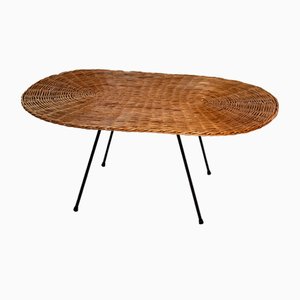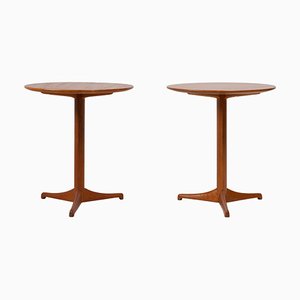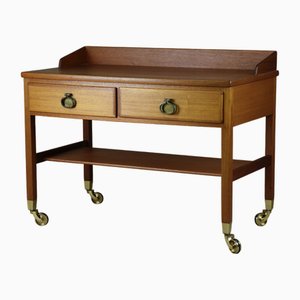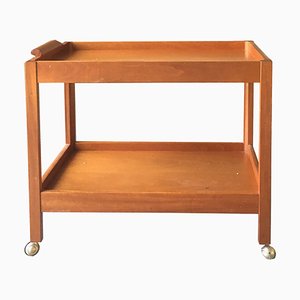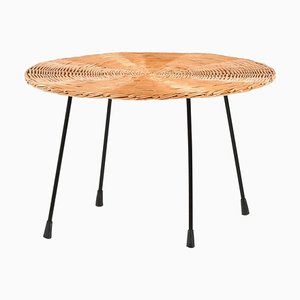
Renowned for her curvaceous armchair and sofa designs that utilize wood and, pioneeringly so, polystyrene, Swedish modernist architect and furniture designer Kerstin Hörlin-Holmquist hails from a robust early-century generation of Scandinavian female furniture designers that includes Nanna Ditzel, Grete Jalk, and Tove Kindt-Larsen.
Born May 30, 1925, in Arvika, Sweden, Hörlin-Holmquist began her career path studying Art History in postwar England (1946-1947) before returning to Sweden in 1948 to study at Stockholm’s esteemed College of Arts, Designs, and Crafts (now Konstfack), an institution which had, in earlier decades, already graduated such multi-discipline design luminaries as Greta Magnusson Grossman and Stig Lindberg. It was at the end of her time at Konstfack that Hörlin-Holmquist designed her famous shell-seated, hand-woven wicker Kraal Chairs, the debut of which—at the Röhsska Museum’s 1952 exhibition 52 Möbler 52 in Gothenburg—attracted the attention of major department store Nordiska Kompaniet. Hörlin-Holmquist’s chair design was incorporated into Nordiska Kompaniet’s Triva Collection, a new versatile and easy-to-assemble furniture series aimed at modern, postwar consumers.
After Hörlin-Holmquist agreed and production began at Nordiska Kompaniet’s workshops in Nyköping, Hörlin-Holmquist was asked to take a larger role in the development of the Triva Collection and to provide the company a variety of furniture designs and interior fittings that expressed a modern Scandinavian ethos through soft lines and adaptive humanism. It was during this tenure, which spanned until 1964, that Hörlin-Holmquist designed her most iconic work—namely, her Paradiset Collection (“Paradiset,” the Swedish word for “Paradise” or “Eden”) from 1956-1958, which included the wood-framed Eva Lounge Chair, its masculine counterpart, the Adam Chair, and, later, the button-back (a Hörlin-Holmquist hallmark) Paradiset Sofa.
Notably, Hörlin-Holmquist often involved her husband, Erik Holmquist, in her creative process; together, they would craft and model her designs so that the prototypes could be tested for functionally in their own home before initiating production.
While most of her design oeuvre fell within her time at Nordiska Kompaniet’s, Hörlin-Holmquist did continue to design after 1964, with standouts including her Charlotte Dining Set for famous Finnish firm, Asko, as well as the Skrindan series of chairs for OPE Möbler—both sometime in the later 1960s. In her later years, she was linked with Kalingrad-based firm A&C Collection, whose design focus was on selling complete interiors to offices and other public environments.
She passed away February 3, 1997, in Ängelholm, Sweden.

